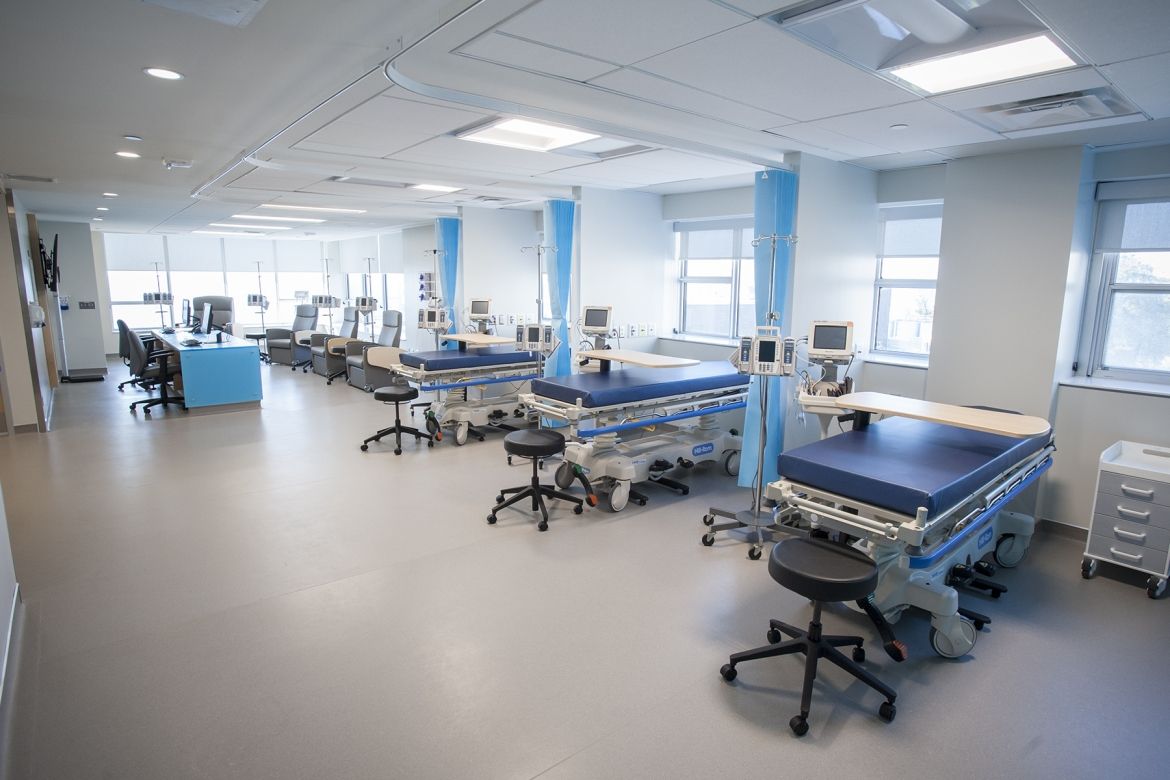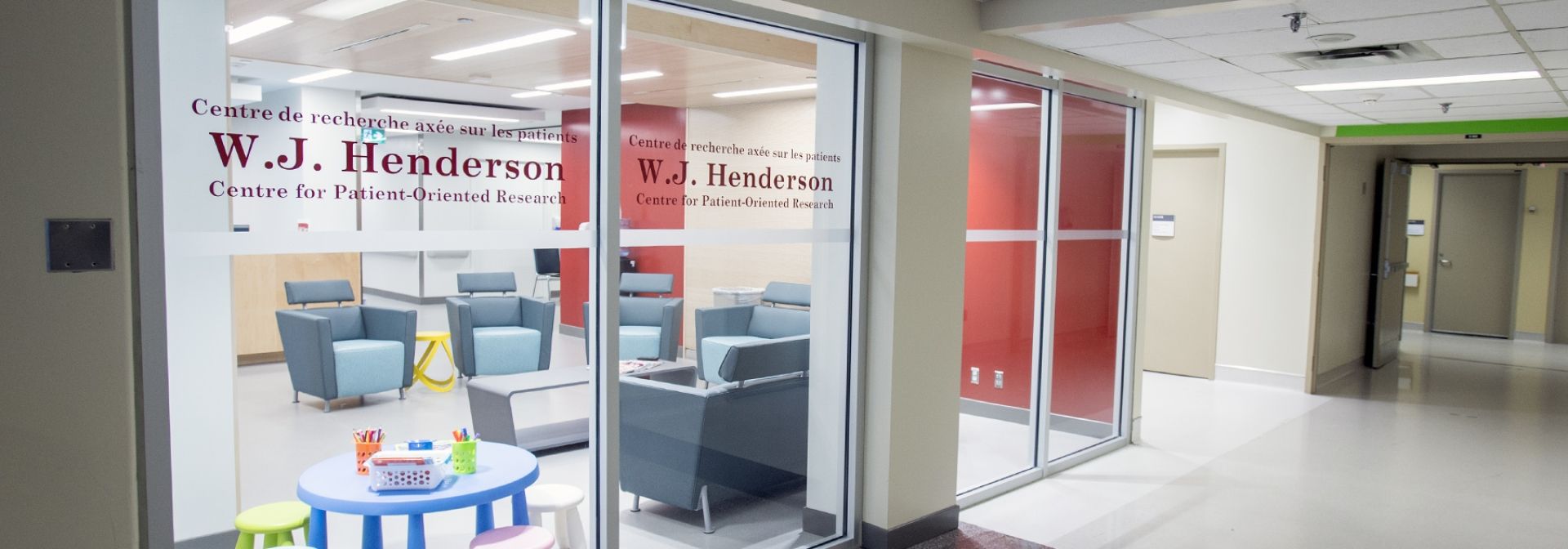Effective immediately masking is required for everyone when present on all inpatient units, in the Emergency Department (ED), the Urgent Care Centre (UCC), and the Children’s Outpatient Centre (COPC).
W.J. Henderson Centre for Patient-Oriented Research
A dedicated,10,000-square-foot research space, located on Connell 4 at KHSC’s KGH site.
Being located in a hospital setting allows clinician-scientists, researchers and research volunteers/teams to work together in a safe and accessible environment, with nearby support if required. Overnight stay facilities allow for 24-hour monitoring of study patients, enabling clinicians to conduct Phase 1 and 2 clinical trials, crucial steps in the development of new drug and device treatments and therapies.
Features
- Shared labs and work spaces
- Treatment room for minor surgeries and procedures
- Clinical trials unit, including overnight stay facilities
- Eye-tracking labs and KINARM robotic assessment labs
- Gastrointestinal diseases research lab
- Patient exam rooms and comfortable waiting and nourish areas
- State-of-the art meeting rooms and areas for monitoring visits
Other facilities
Asthma Research Unit (ARU)
- Research in a broad spectrum of asthma-related conditions including mechanisms of cough in asthma, work-related asthma, asthma health services and outcomes research, asthma guidelines implementation, asthma clinical trials and asthma education.
- Our interactive AsthmaLife® website provides trusted information, e-learning and other resources to support patient self-management in partnership with their health-care providers.
Canadian Cancer Trials Group Tumour Bank
The Canadian Cancer Trials Group Tumour Tissue Data Repository (TTDR) was established in 1997 to support Correlative Science, and contains unique disease specific collections which are linked to an associated clinical dataset.
Cardiovascular Imaging Lab
- 3D echocardiography, interventional echocardiography, 3D strain, and cardiac CT imaging applications.
- Recognized for research and training in novel methods of heart disease diagnosis and treatment.
Centre for Applied Urological Research (CAUR)
- The Centre for Applied Urological Research, which consolidated the various research activities of the department members in one location at 62 Barrie St. was opened in 2005.
- Recognized for innovative and world-class research on the diagnosis, causes, prevention and treatment of urological conditions
Centre for Health Innovation (CHI)
- Integrated Queen’s-hospital research hub for bone and joint disorders, bringing together clinicians and scientists from medicine, engineering, health sciences and computer science.
- Computer-enhanced surgical suites and specialized labs for connective tissue, bio-simulation, tissue processing, prosthesis design, software development and gait analysis.
- Developing novel diagnostic techniques, new drug therapies, improved repair and reconstruction procedures, and enhanced rehabilitation strategies.
Centre for Neuroscience Studies Labs
- CNS facilities at KHSC's Hotel Dieu site feature Kinarm, eye-tracking and behavioural assessment laboratories.
- CNS facilities at the W.J. Henderson Centre for Patient-Oriented Research, KGH site, feature Kinarm and eye-tracking labs.
Environmental Exposure Unit (EEU)
- Gold-standard 140-seat allergen challenge facility for studying effectiveness of anti-allergic medications and drug candidates for allergic rhinitis.
- Services include study design, planning and management, labs and pharmacy services and data collection services.
Gastrointestinal Diseases Research Unit (GIDRU)
- 10,000 sq-ft research hub linking medical, surgical and pathology clinicians and scientists in biomedical and molecular sciences, targeting causes and treatments for diseases of the gastrointestinal tract and related conditions.
- Leading-edge molecular biology and tissue culture facility, confocal microscopy, ion imaging / electrophysiology laboratory and “Robogut” lab developing novel treatments for C. difficile.
Human Mobility Research Lab (HMRL)
- State-of-the-art facility with unique infrastructure to measure the mechanical factors of joint loading, orientation, and neuromuscular function during activities of daily living, including high demand recreational and occupational tasks.
- Motion capture system with optoelectronic cameras allows researchers to analyze joint angles, oxygen consumption, joint loading and muscle activation.
Kinarm Labs
- The world's first robotic system for precisely measuring the effects of brain injury on motor and cognitive function.
-
Used for research into a wide range of brain injuries and diseases, such as stroke, concussion, cardiac arrest and Parkinson’s disease.
- Available at all of Kingston Health Sciences Centres’ campus sites and Providence Care Hospital.
Kinarm Labs
- The world's first robotic system for precisely measuring the effects of brain injury on motor and cognitive function.
-
Used for research into a wide range of brain injuries and diseases, such as stroke, concussion, cardiac arrest and Parkinson’s disease.
- Available at all of Kingston Health Sciences Centres’ campus sites and Providence Care Hospital.
Laboratory of Clinical Exercise Physiology (LACEP)
- Focus on understanding the function of multiple organ systems and the factors that work together to limit exercise capacity in health and disease
- State-of-the-art equipment and world-leading, non-invasive techniques enable simultaneous recordings of cardio, pulmonary, and circulatory systems.
Ontario Tumour Bank
Kingston Health Sciences Centre is one of four Ontario sites supporting and contributing to the Ontario Tumour Bank. Industry and academic researchers can request access to samples and data for research purposes.
Ophthalmology Simulation Lab
- Surgical skills simulation wetlab enables learners to gain stage-appropriate skills, facilitating their transition to surgery on real patients.
- Facilities include OR instruments, phacoemulsification machine, and pathology microscope with projection capabilities for examining specimens on a large colour monitor.
Skeletal Observation Laboratory
- 1,500-sq-foot lab capable of imaging the human body’s bones and joints in motion during high-impact, vigorous activity.
-
Equipment includes ultra low-dose (100 times lower than standard), loadbearing CAT scanner for imaging bones during motion, high-speed X-ray and video camera, capable of 1000 frames/second and synchronized ultrasound system, for measuring mechanics and ‘stretch’ of soft tissue.
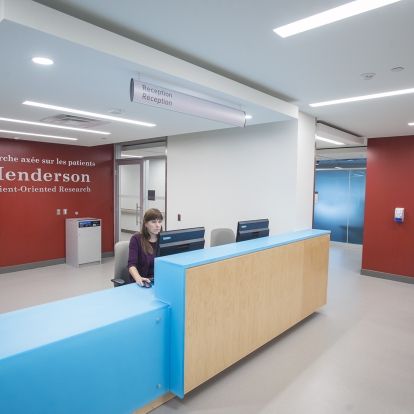
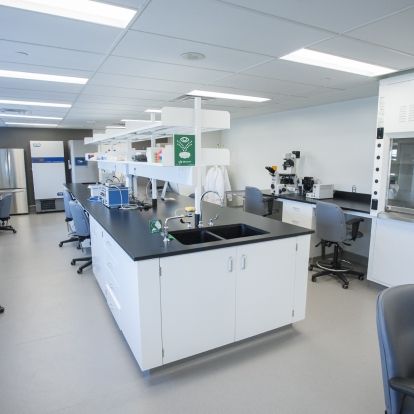
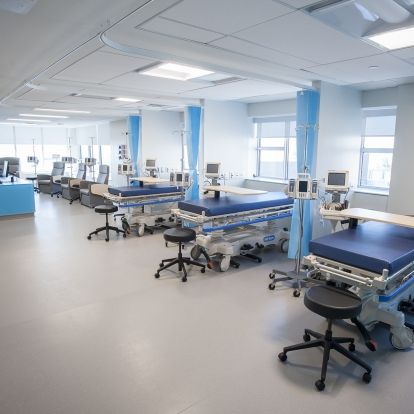
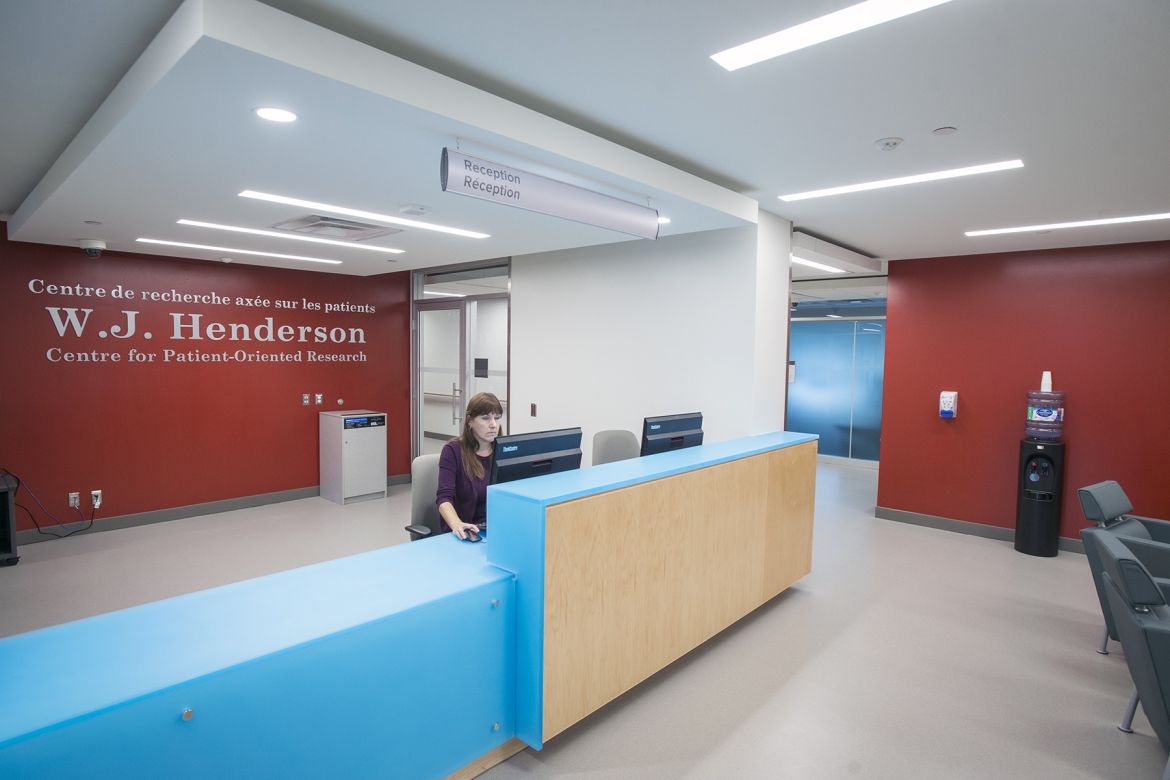
Reception area, W.J. Henderson Centre for Patient-Oriented Research
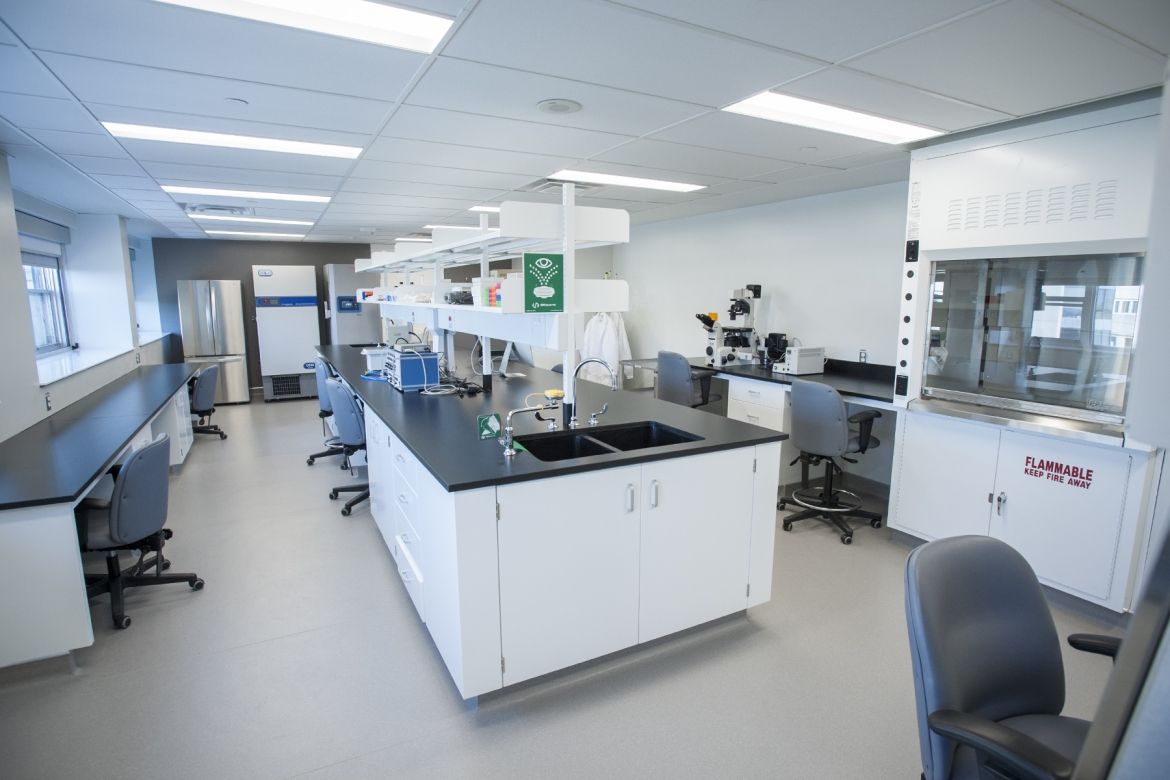
Gastrointestinal Diseases Research Unit lab, WJH Centre
